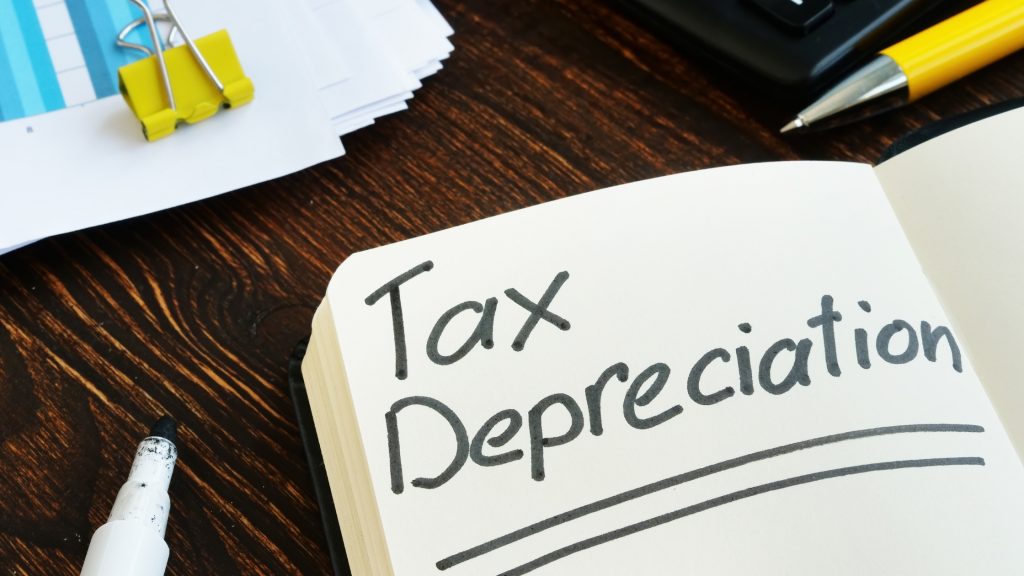Ultimate Guide to Property Depreciation Schedules in Australia
Property investment in Australia can be a lucrative venture. However, to truly maximize your returns, understanding property depreciation is crucial.
Property depreciation schedules are a key tool for investors. They provide a roadmap for claiming tax deductions over the life of your investment property.
But what exactly is property depreciation? And how does it benefit Australian property investors?
This guide will delve into these questions. It will provide a comprehensive overview of property depreciation schedules in Australia.
From understanding the types of depreciation to creating your own schedule, this guide has you covered. Let’s unlock the potential of property depreciation together.
Understanding Property Depreciation in Australia
Property depreciation is the process of accounting for the wear and tear of a building and its assets over time. In Australia, property investors can claim depreciation as a tax deduction, reducing taxable income.
There are two types of depreciation: capital works and plant and equipment. Each type offers unique benefits and is calculated differently.
Capital works refer to the construction costs of the building itself. Plant and equipment cover the removable items within the property.
Investors must understand depreciation to maximize tax returns. By doing so, they can significantly improve the cash flow from their investment property.
Here’s how property depreciation can benefit you as an investor:
- Reduces taxable income
- Increases return on investment
- Provides long-term savings
Properly utilizing depreciation schedules can transform your investment strategy. It can potentially turn a passive investment into a highly profitable one.
What is Property Depreciation?
Property depreciation refers to the decrease in value of a property’s assets over time. Buildings deteriorate, and items within them lose value.
Australian tax law allows owners to claim this depreciation as a tax deduction. This can be a powerful tool to offset taxable income.
The concept applies to both new and existing properties. However, the actual deductions will vary based on asset type and effective life.
Why is Property Depreciation Important for Investors?
For investors, property depreciation provides an opportunity to maximize tax savings. By reducing taxable income, investors can improve their cash flow.
This increase in cash flow makes it easier to manage expenses associated with investment properties. It may even allow for reinvestment into additional properties.
Moreover, depreciation deductions can also play a role in investment strategy. They contribute to a portfolio’s overall financial health, offering benefits beyond simple tax savings.
Types of Property Depreciation
Understanding the types of property depreciation is key for maximizing tax benefits. In Australia, there are two primary types: capital works deductions and plant and equipment depreciation.
Capital Works Deductions cover the structural elements. This includes the building itself, walls, and fixed items like plumbing.
Plant and Equipment Depreciation involves assets that are removable or mechanical. Examples include air conditioning units and furniture.
Both types offer valuable deductions. However, the method of calculation differs.
When planning your investment strategy, consider the potential deductions from both types. This can greatly affect cash flow and investment returns.
Key elements to remember about depreciation:
- Capital works: structural, fixed
- Plant and equipment: removable, mechanical
- Different calculation methods
Combining these elements effectively can unlock significant financial benefits. It enables investors to reduce tax liabilities and improve profitability.
Capital Works Deductions
Capital works deductions apply to the structural aspects of a property. This includes the bricks, mortar, and roof of the building.
These deductions are available for properties built after a certain date. For residential properties, this date is typically July 1, 1985.
Investors can claim these deductions at a rate of 2.5% per annum. The deduction period can last up to 40 years, depending on the property’s age.
Plant and Equipment Depreciation
Plant and equipment depreciation refers to the wear and tear of removable items. These can include appliances, carpets, and even blinds.
These items are typically depreciated over a shorter period compared to capital works. The effective life of the asset determines its rate.
For these deductions, items are categorized as either low-value or high-value. Low-value items can be written off more quickly, enhancing tax benefits immediately.
Eligibility and Compliance
Determining eligibility for property depreciation is crucial. Not everyone can claim these valuable deductions.
Australian property owners must adhere to specific criteria to qualify. This ensures compliance with tax regulations and optimizes deductions.
Eligibility depends on property type, construction date, and ownership status. These factors determine the deductions available to investors.
Engaging a professional can aid in verifying eligibility and maximizing benefits. They ensure that all deductions are claimed and nothing is missed.
Here’s a brief eligibility checklist:
- Ownership: Must be the property owner or responsible for wear and tear
- Construction date: Usually after July 1, 1985, for capital works
- Property type: Must produce income, like rental properties
Who is Eligible for Property Depreciation?
To claim property depreciation, the property must generate income. This usually means it’s an investment property.
Another important factor is ownership. Only the property’s owner can claim depreciation deductions.
For capital works, the property should have been built or refurbished after specific dates. This impacts the eligibility for such deductions.
ATO Compliance and the Role of Quantity Surveyors
Compliance with the Australian Taxation Office (ATO) is essential. Proper documentation and adherence to rules are mandatory.
A qualified quantity surveyor plays a significant role. They provide the expertise needed to prepare accurate depreciation schedules.
These professionals assess property assets. They help in producing a report that’s compliant with ATO standards.
Consulting a quantity surveyor ensures no deductions are overlooked. Their input can be invaluable for maximizing tax returns.
Creating Your Property Depreciation Schedule
Creating a property depreciation schedule is a key step for any investor. The process can initially seem complex, but it’s manageable with the right approach.
The first step is to organize a detailed property assessment. This typically involves a site inspection by a qualified quantity surveyor.
After the inspection, all depreciable assets are identified. This includes both capital works and plant and equipment items.
Next, a comprehensive report is prepared. This report outlines the depreciation for each asset over its effective life.
Here is a brief checklist for creating a property depreciation schedule:
- Arrange a site inspection with a quantity surveyor.
- List all assets eligible for depreciation.
- Obtain a thorough depreciation report.
- Review and understand the report with professional guidance.

The Process of Creating a Depreciation Schedule
Start by hiring a certified quantity surveyor. Their expertise is crucial in accurately assessing your property’s depreciation.
The surveyor conducts a meticulous inspection. They identify all assets that qualify for depreciation, ensuring nothing is overlooked.
Once the inspection is complete, the surveyor compiles their findings. They prepare a detailed depreciation schedule customized to your property.
The schedule includes all eligible deductions. It provides a clear breakdown of claims over the life of each asset.
Review the schedule with your tax advisor. This ensures you understand all entries and how they affect your tax returns.
Choosing the Right Depreciation Method
Deciding on a depreciation method is pivotal. It affects your deductions and should align with your investment strategy.
There are two main methods: prime cost and diminishing value. Each has its own benefits depending on your goals.
Prime cost spreads deductions evenly over an asset’s life. Diminishing value, however, offers higher initial deductions.
Select the method that best suits your financial goals. Consulting with a tax professional can help you make an informed decision.
Maximizing Your Tax Benefits
Maximizing your tax benefits through property depreciation is pivotal for investment returns. A strategic approach can significantly enhance your cash flow.
Depreciation allows you to claim substantial deductions. This can lessen your taxable income and elevate your overall investment yield.
Being aware of all available depreciation possibilities is crucial. Immediate write-offs and low-value pooling can fast-track your tax savings.
Here’s how to maximize your tax benefits:
- Explore immediate write-offs for minor assets.
- Utilize low-value pooling for assets under specific thresholds.
- Regularly review and update your depreciation schedule.
- Incorporate any renovations or improvements into your schedule.
- Seek guidance from tax professionals to optimize claims.
Regularly reviewing your depreciation schedule is essential. This ensures all deductions are up-to-date and reflective of your current property condition.
Immediate Write-Offs and Low-Value Pooling
Immediate write-offs allow quick deductions for low-cost assets. This can be particularly advantageous for rapidly expensing minor investments.
Low-value pooling helps by combining assets under a specific value. This method allows you to depreciate such assets at a higher rate.
Both strategies are powerful for speeding up deduction timelines. They boost cash flow, providing tangible financial relief swiftly.
It’s vital to understand the criteria for these methods. Consulting a professional ensures compliance with legal standards.
Renovations and Improvements Impact
Renovations can refresh your property and boost its value. They also influence depreciation schedules significantly.
New installations can qualify for additional depreciation. This further amplifies your potential tax benefits.
However, it’s necessary to differentiate between repairs and improvements. Not all expenditures qualify for increased depreciation.
Careful documentation of all renovations is essential. It ensures all improvements are appropriately reflected in your schedule.
Regular updates to your depreciation schedule after renovations help maximize deductions and optimize your investment returns.
Common Misconceptions and Clarifications
Understanding property depreciation can be confusing. Misinformation often leads to missed financial opportunities for property investors.
A common misconception is that only new properties qualify for depreciation. In reality, both new and existing properties can provide depreciation benefits.
Another myth is that depreciation is automatically calculated with other tax deductions. However, creating a formal property depreciation schedule is crucial.
It’s also believed that older properties lack depreciation benefits. Yet, improvements and capital works can still yield valuable deductions.
Here are common misconceptions clarified:
- Only new properties qualify for depreciation.
- Depreciation is part of standard tax deductions.
- Older properties offer no depreciation benefits.
- Only accountants can prepare depreciation schedules.
- All renovations qualify for immediate depreciation.
Clarifying these misunderstandings helps investors tap into full depreciation potential. Accurate information can significantly boost financial returns. Engaging experts can ensure you leverage all tax deductions effectively.
Overall, awareness and knowledge are keys to maximizing property investment benefits.
Maintaining and Updating Your Schedule
Keeping your property depreciation schedule up-to-date is essential. Changes in property assets may affect depreciation claims and tax returns.
Regular reviews ensure your schedule reflects current property conditions. This includes noting upgrades, improvements, or asset disposals.
Consult with a professional to align your schedule with the latest tax laws and guidelines. This proactive approach helps maximize deductions and avoid potential audit issues.
By maintaining an accurate schedule, you ensure compliance with ATO requirements and boost your investment returns. Keep all records and documents organized to substantiate any claims made.
Staying informed and proactive are key to effectively managing your property depreciation benefits.
Case Studies and Real-Life Examples
Real-life case studies illustrate the financial benefits of property depreciation. Many investors have seen improved cash flow through effective schedules.
Consider a couple owning a new investment property. They maximized tax deductions by claiming both capital works and plant and equipment depreciation. This resulted in a significant return at tax time.
In another case, an investor overlooked depreciation until consulting a quantity surveyor. After updating their schedule, their tax benefits increased by thousands annually.
A property owner with an older building may assume depreciation claims are limited. However, after renovations, they leveraged new deductions, enhancing their investment returns.
These examples show how strategic depreciation planning can have a powerful impact. Engaging with experts and maintaining accurate records ensures optimal outcomes for property investors.

Conclusion and Next Steps
Understanding property depreciation is crucial for maximizing your investment property returns. We’ve explored how depreciation schedules in Australia can enhance financial outcomes.
Consider the potential impact on your cash flow and long-term investment goals. Engaging a qualified quantity surveyor ensures compliance with ATO regulations and maximizes your tax deductions.
Take action by reviewing your current depreciation schedule or initiating a new one. This strategic step can significantly enhance your property’s financial performance. Stay informed about updates in tax laws to maintain your schedule’s effectiveness over time.
Disclaimer: The information provided here is general in nature and should not be considered as professional tax advice. For specific tax guidance, please consult a qualified tax professional or visit the ATO website.









